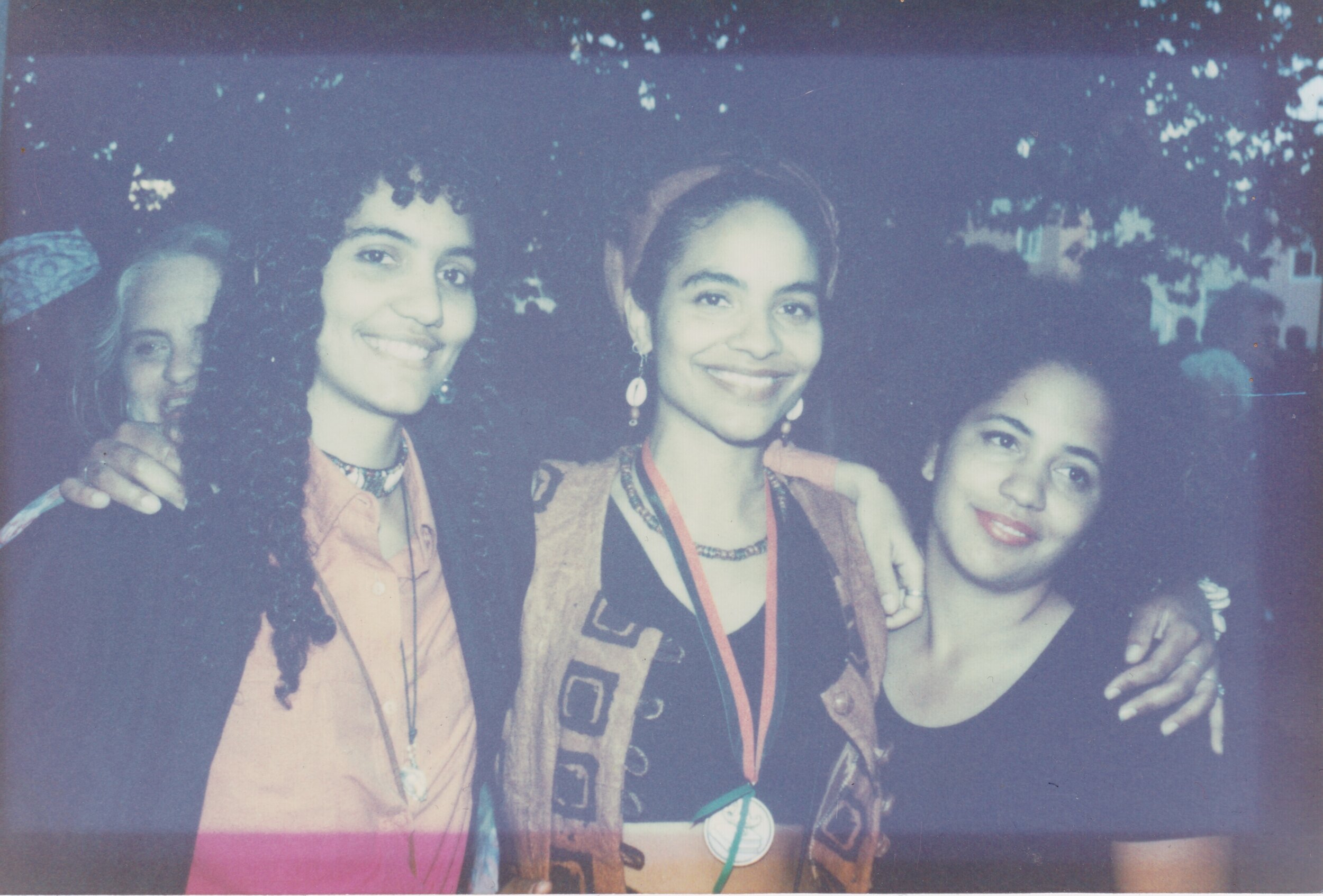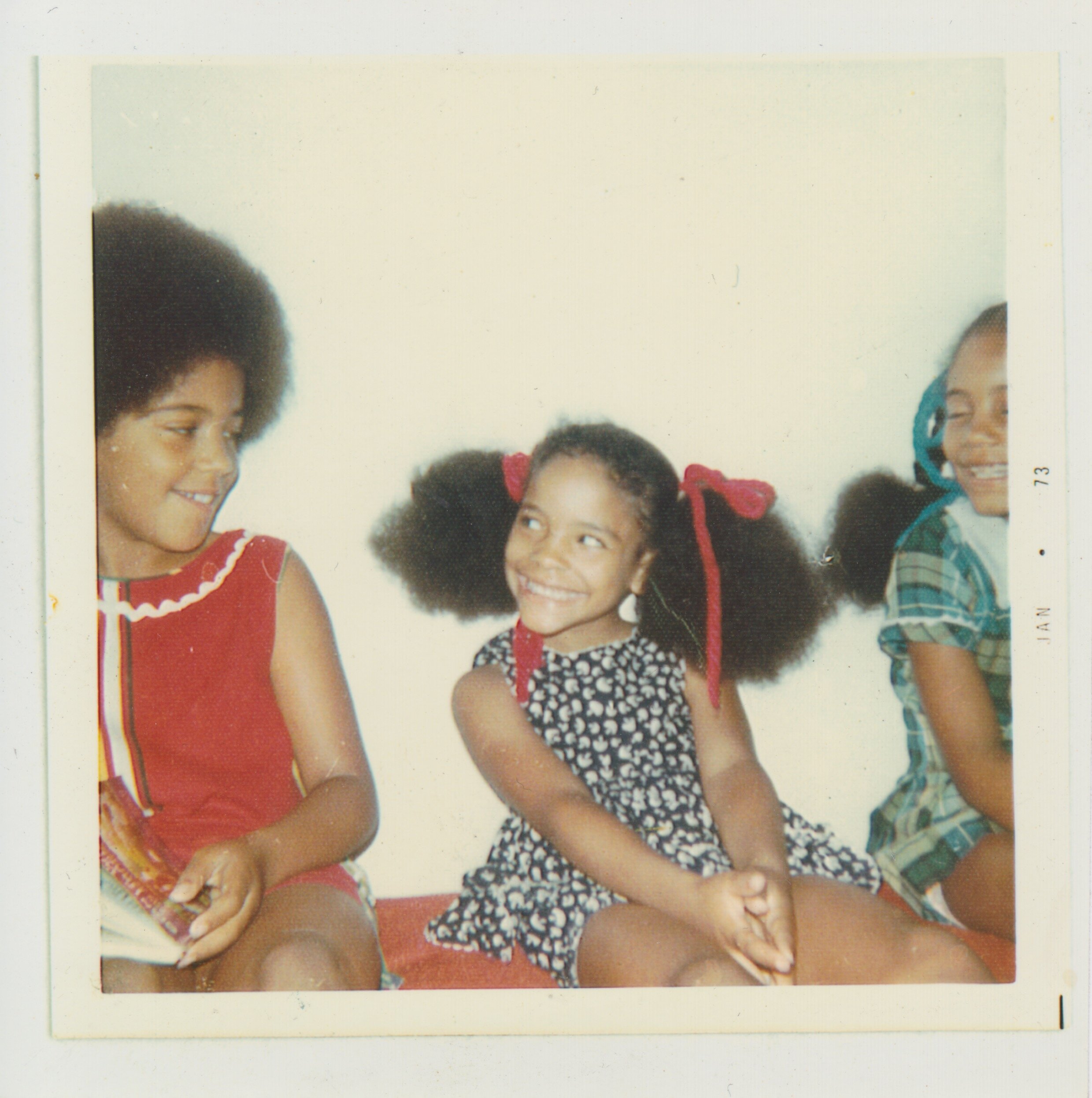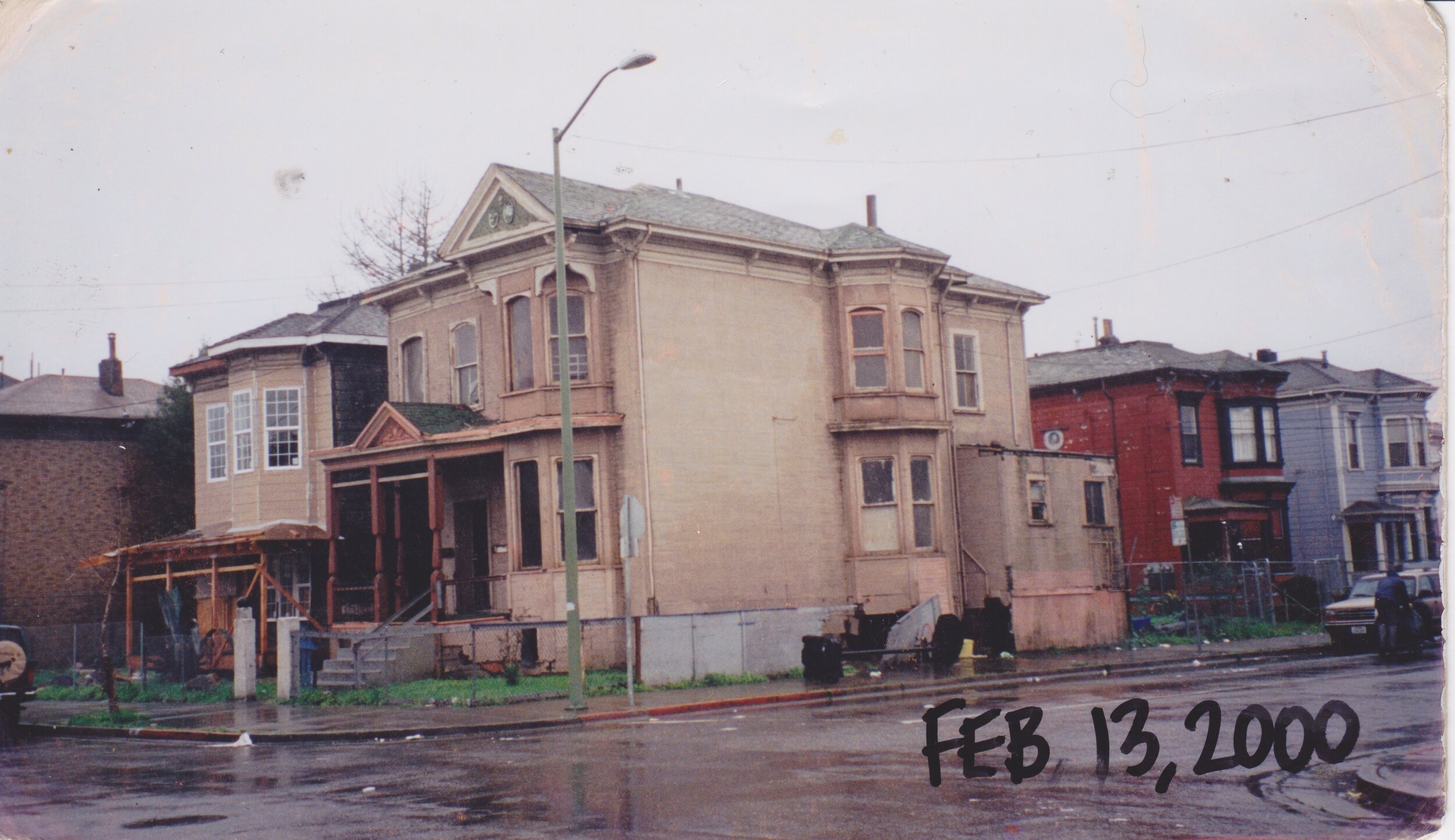
“We have to start being as intentional about our liberation, as they are about our oppression.”
-Jilchristina Vest
Interview #9 | February 17, 2021
They say be quiet
She speaks louder
They say sit down
She stands taller
They say don’t ever think you are worthy of life and love
She says I will live and I will love radically
I will create the desires of my heart
And I will show the youth they can do the same
- Jzov Najea
Jilchristina Vest, an Oaklander for over thirty years, undoubtedly portrays the powerful saying: be the change you want to see. Energized by the scarce exposure of Breonna Taylor’s murder by Kentucy police officers in contrast to the nationwide uproar in response to George Floyd’s murder by Mineapolis police, Jilchristina Vest saw a need and addressed it. Vest challenged the insufficient visibility of Black women’s lives, labor, and leadership through the curation of a mural on her home that publicly honors the legacy of the women of the Black Panther Party by Lead Designer and Muralist Rachel Wolfe-Goldsmith.
February 3, 2021 , 5:00 PM PST
Oakland’s history is rich with Black organizers and activists inspiring upcoming generations to make moves for freedom and this tradition is still alive and well through justice warriors such as Jilchristina. In this interview she offers a glimpse into her personal journey to the Bay Area and the experiences that shaped her passion and activism. Vest is determined to inspire Black girls and women to be themselves and trust their visions completely and it shows.
Q1: Let’s start at the beginning. Who is Jil Vest?
Jil Vest is a mixed girl, Black woman, queer BIPOC, a Chicagoan, an Oaklander, a justice warrior, and a delicate bulldozer. I lived life before Atari and cell phones.
I was born in Chicago in 1966, the same year The Black Panther Party started. I’m the baby of four girls - two of them were born in Michigan, two of us were born in Chicago. I lived in Chicago until I was 16.
Q2: How was life in Chicago for you?
Growing up in Chicago was really intense. I’m first generation mixed, I have a white mom and a Black father and was raised with a Black identity. Chicago is one of the most racially segregated places I've ever lived. I'd gone to I think, 13 different schools by the time I graduated high school because my parents were divorced. It’s not like we switched every year, but sometimes we switched more than one time in a year. A couple of times we switched because it was just too violent. It was because we were a mixed family we were getting beaten up every single day. That’s when we moved to Phoenix because my dad’s job changed. I graduated high school there and after one year of college I moved to New York. Shortly after that, in 1986, I came to San Francisco to visit my mom and never left. I called my roommate in New York, Nanette, and said ‘I need you to ship all my stuff to California’.
Q3: In what ways did the Bay Area influence your interest in the Black Power movement?
Within a couple of years of being here I read ‘The Autobiography of Malcolm X’, ‘Beneath the Underdog', the autobiography of Charles Mingus, ‘Manchild in the Promised Land’, and then ‘Song of Solomon’. After all of these books and more I was like ‘Oh my god, I need to go back to school right now. I need to learn everything there is to know about Black people and women’. And that’s when I went to San Francisco State. I had professors like Angela Davis, Donna Hubbard, Johnetta Richards, and Chinasolé- these Black women in their 40s and they’re so fierce. They were so amazing that anytime I was in their presence, I automatically stood up taller. I automatically had clearer speech, I was more focused, and I was just more intentional.















Q4: In a previous interview you mentioned that you want to celebrate what Black people can do for themselves versus memorializing violence against Black people. What does that mean to you?
Well part of it comes from the rebellions that happened in May and June around the world where statues were being pulled down. All of these statues and monuments were celebrating the people that oppressed us. And what was really frustrating me, during that time, was this tired trope that we have a lot of the time, that always starts with, ‘Well, what are they gonna do’? We already fucking know what they're gonna do. They're consistent and predictable. And they do things that benefit them and maintain their power. But why do we keep saying when are they going to put up a mural to the women of the Black Panther Party? Well, why don't we do it? My thing is we have to start being as intentional about our liberation as they are about our oppression.
Q5: How does this mural on your home express your commitment to celebrate Black folks?
Last summer, I was becoming so desperate to do something. I needed to find a way to counteract the depression and counteract my frustration. And I wasn't going to take to the streets because I feel like I'm too old for that. So I was like, ‘I have to figure out something else to do’. All of the murals that were going up were memorializing all of the dead Black bodies. They are gorgeous murals, I’m not saying they’re not, but I thought ‘God, this is a whole city covered with the pictures and names of dead Black bodies who have been killed by state sanctioned violence’. These are the memorials we're putting out for ourselves. Why can't we change the narrative? This is several centuries worth of pain. I'm not implying at all that we need to just get over it. But we're the only ones that can take steps towards healing. Whether it's my individual self, or if it's my collective community, whoever harmed me is not going to come back and try to heal me. So whoever is oppressing me is not going to come back and try to free me, it's just not going to happen. You know, so I have to free myself, I have to heal myself. We have to free ourselves, we have to heal ourselves. I wrote this quote down in my second email signature: ‘we need to take down the monuments of the people that oppressed us and killed us and thought us inhuman and we need to replace them with monuments honoring the people who fought and died for our liberation, who saw our humanity’.
Q6: In what ways has this project changed or inspired you?
I have learned so much in the past eight months, I mean, I was never and never will say that I'm any kind of Black Panther expert. I am not, I just adore them. And I adore what they've done for our people and poor oppressed people everywhere. And their activism looks like mine, what they did looks like what I do and what I want to do.
And this project allows me to be surrounded by all of these women and be reminded of what it feels like to love your people and to do things out of love. I feel very gifted and very honored because I didn't set out to do this. I didn't think it was going to be this big.
I've cried so many times since this project started because it's so emotional. I love Black people and Black women so much. And I'm so fucking sick of us being invisible and ignored when we're the ones that are doing all the things.
Jilchristina’s story speaks to the importance of giving attention to our rage, frustrations, and passions and intentionally channeling them to create something we wish to see. The activism or advocacy that folks demonstrate does not look the same and it is not supposed to. We all have gifts, visions, and purposes that we can use to create what our communities are missing. With much love and desire in her voice Vest urges us to be as intentional with our words and actions as our oppressors are about our demise.
Jilchristina Vest, thank you so much for welcoming us into your space and sharing your time, energy, and wisdom with us! Your passion is contagious and we are so grateful that we were able to experience it.
Additionally, thank you so much to Rachel Wolfe-Goldsmith for sharing your vision and craft with the world! We see you. We appreciate you.
To support, visit the West Oakland Mural Project Website and Instagram.
RESOURCES/REFERENCES
CONTRIBUTORS
By Sheilby & Jzov
NARRATVES
As we continue to build, please note that NARRATVES operates solely on donations and does not receive funding. Please consider making a donation to help sustain our platform and projects
Images taken by Sheilby Macena , GALLERY HERE
ALL photographs remain the property of NARRATVES
